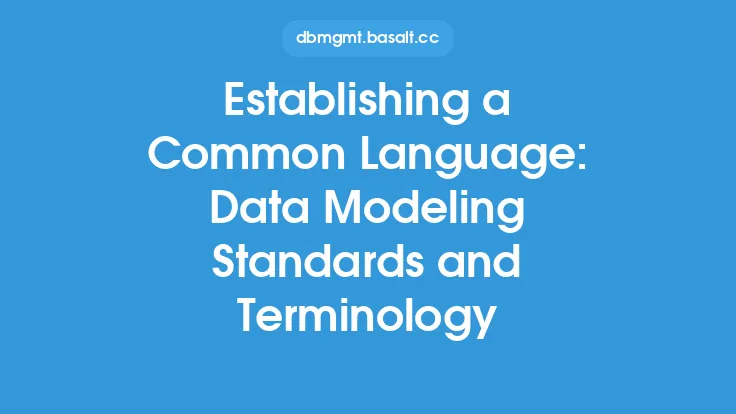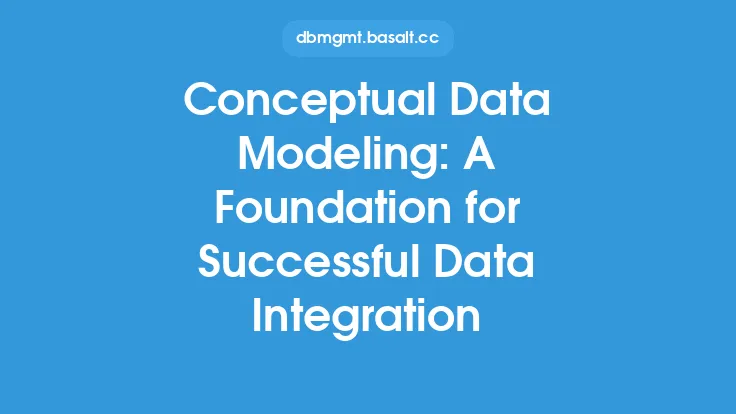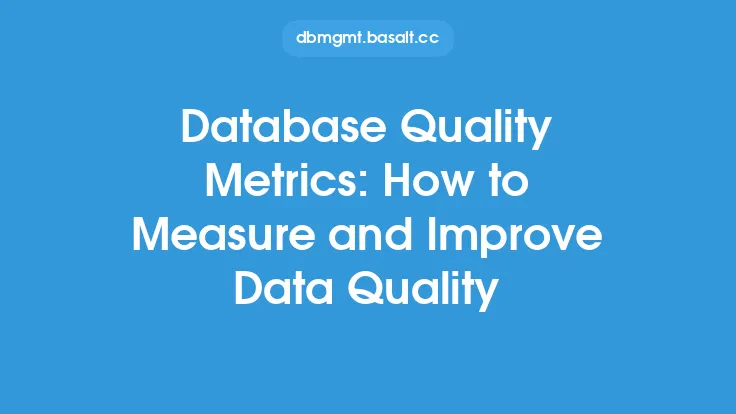Data integration is the process of combining data from multiple sources into a unified view, providing a single, accurate, and up-to-date representation of an organization's data. However, the success of data integration depends on the quality of the data being integrated. Data quality refers to the accuracy, completeness, consistency, and reliability of the data. In this article, we will explore the crucial relationship between data integration and data quality, and why it is essential to ensure that data is accurate, complete, and consistent before integrating it.
Introduction to Data Quality
Data quality is a critical aspect of data integration, as it directly affects the accuracy and reliability of the integrated data. Data quality issues can arise from various sources, including data entry errors, inconsistent data formats, and missing data. Poor data quality can lead to incorrect analysis, poor decision-making, and ultimately, business losses. Therefore, it is essential to ensure that data is of high quality before integrating it. This can be achieved through data quality checks, data validation, and data cleansing.
The Impact of Poor Data Quality on Data Integration
Poor data quality can have a significant impact on data integration, leading to errors, inconsistencies, and inaccuracies in the integrated data. For example, if data from different sources has different formats or structures, it can be challenging to integrate it seamlessly. Similarly, if data is missing or incomplete, it can lead to gaps in the integrated data, making it less reliable. Furthermore, poor data quality can also lead to data duplication, data inconsistencies, and data contradictions, which can further complicate the data integration process.
Data Quality Dimensions
Data quality can be measured across several dimensions, including accuracy, completeness, consistency, reliability, and timeliness. Accuracy refers to the degree to which the data is correct and free from errors. Completeness refers to the degree to which the data is comprehensive and includes all the necessary information. Consistency refers to the degree to which the data is consistent across different sources and systems. Reliability refers to the degree to which the data is trustworthy and can be relied upon for decision-making. Timeliness refers to the degree to which the data is up-to-date and reflects the current state of the business.
Data Quality Checks and Validation
To ensure that data is of high quality, it is essential to perform data quality checks and validation. Data quality checks involve verifying the data against a set of predefined rules and criteria to ensure that it meets the required standards. Data validation involves checking the data for errors, inconsistencies, and inaccuracies, and correcting them before integrating the data. Data quality checks and validation can be performed using various techniques, including data profiling, data cleansing, and data transformation.
Data Profiling and Data Cleansing
Data profiling involves analyzing the data to identify patterns, trends, and relationships. It helps to identify data quality issues, such as missing or duplicate data, and provides insights into the data's structure and content. Data cleansing involves correcting errors, inconsistencies, and inaccuracies in the data. It involves removing duplicates, filling in missing values, and transforming the data into a consistent format. Data profiling and data cleansing are essential steps in ensuring that data is of high quality before integrating it.
Data Transformation and Data Standardization
Data transformation involves converting the data into a consistent format, making it easier to integrate. Data standardization involves standardizing the data formats, structures, and codes, ensuring that the data is consistent across different sources and systems. Data transformation and data standardization are critical steps in data integration, as they enable the seamless integration of data from different sources.
The Role of Metadata in Data Integration
Metadata plays a critical role in data integration, as it provides context and meaning to the data. Metadata includes information about the data, such as its source, structure, and format. It helps to identify the relationships between different data elements and provides insights into the data's quality and accuracy. Metadata is essential for data integration, as it enables the creation of a unified view of the data, making it easier to analyze and decision-making.
Best Practices for Ensuring Data Quality in Data Integration
To ensure that data is of high quality during data integration, several best practices can be followed. These include performing data quality checks and validation, using data profiling and data cleansing techniques, and standardizing data formats and structures. Additionally, it is essential to establish data governance policies and procedures, ensuring that data is accurate, complete, and consistent across different sources and systems. Regular data quality monitoring and reporting can also help to identify data quality issues early on, enabling prompt corrective action.
Conclusion
In conclusion, data integration and data quality are closely intertwined, and ensuring that data is of high quality is essential for successful data integration. Poor data quality can lead to errors, inconsistencies, and inaccuracies in the integrated data, ultimately affecting business decision-making and outcomes. By performing data quality checks and validation, using data profiling and data cleansing techniques, and standardizing data formats and structures, organizations can ensure that their data is accurate, complete, and consistent, making it easier to integrate and analyze. By following best practices for data quality and data integration, organizations can unlock the full potential of their data, driving business growth, innovation, and success.





